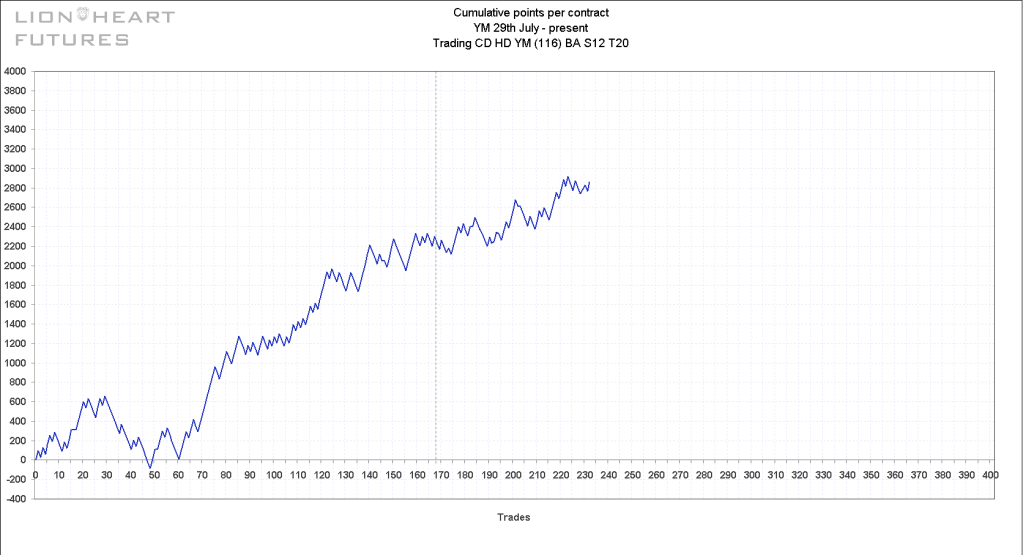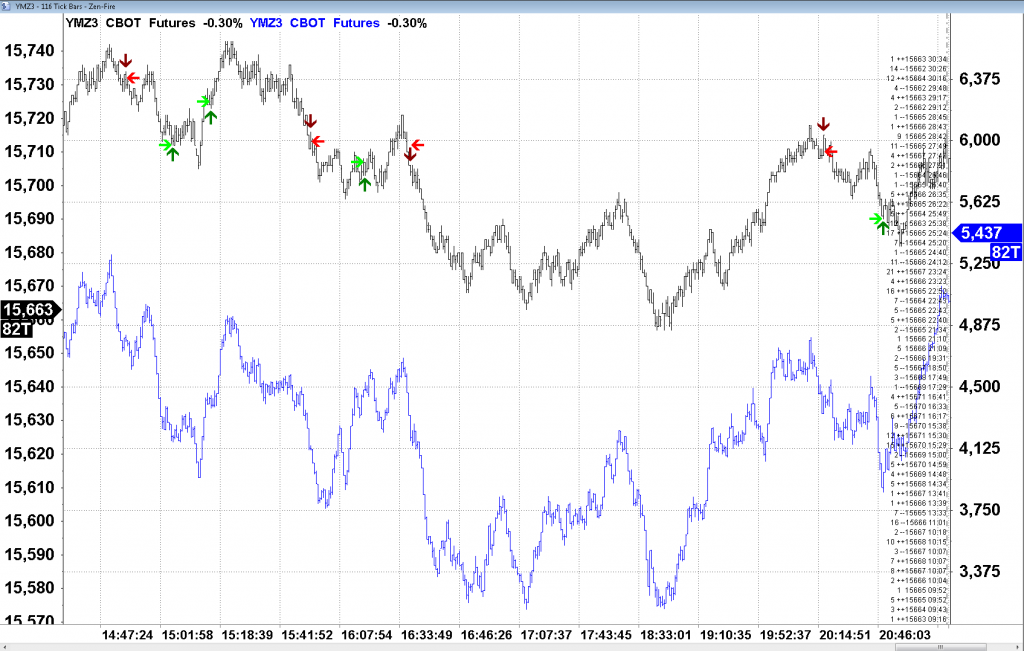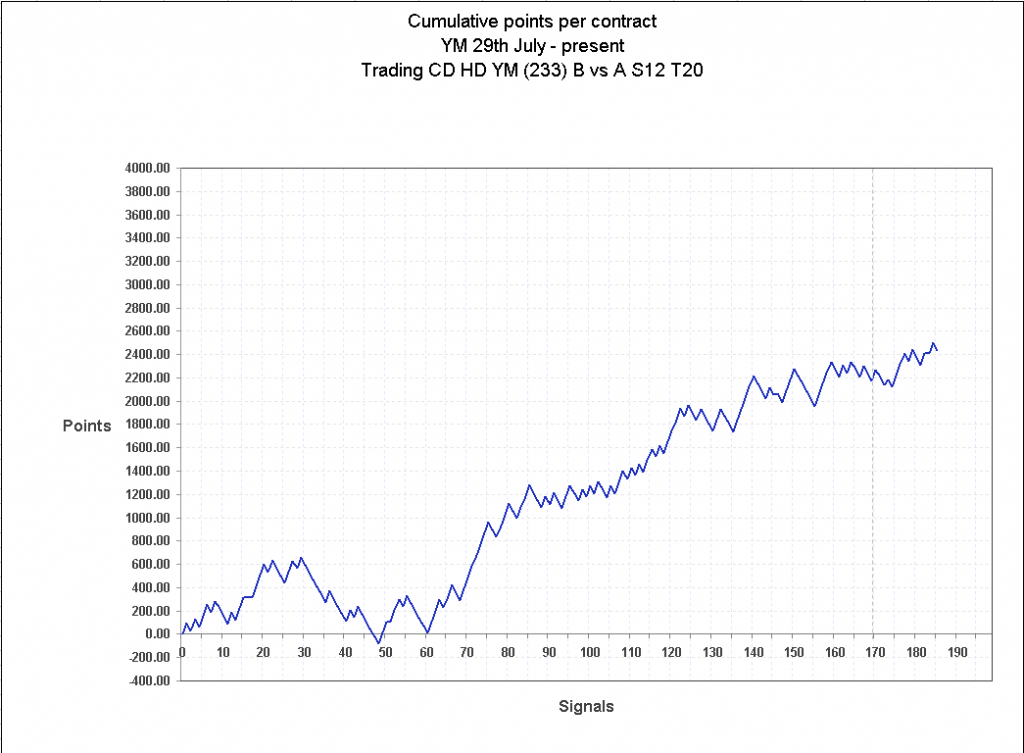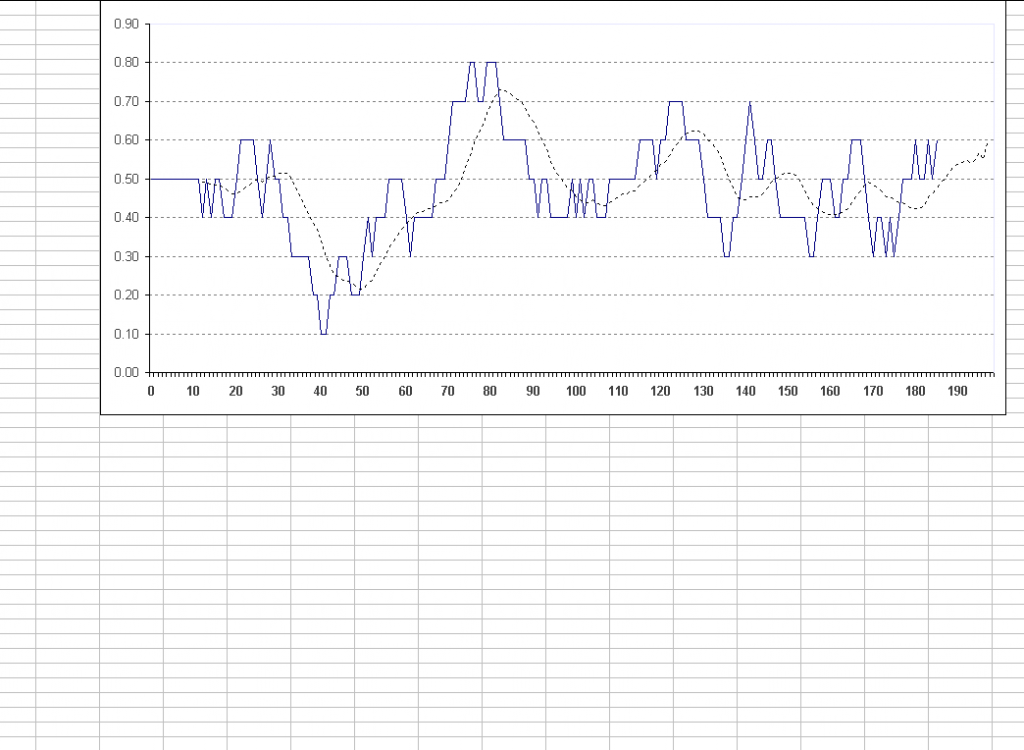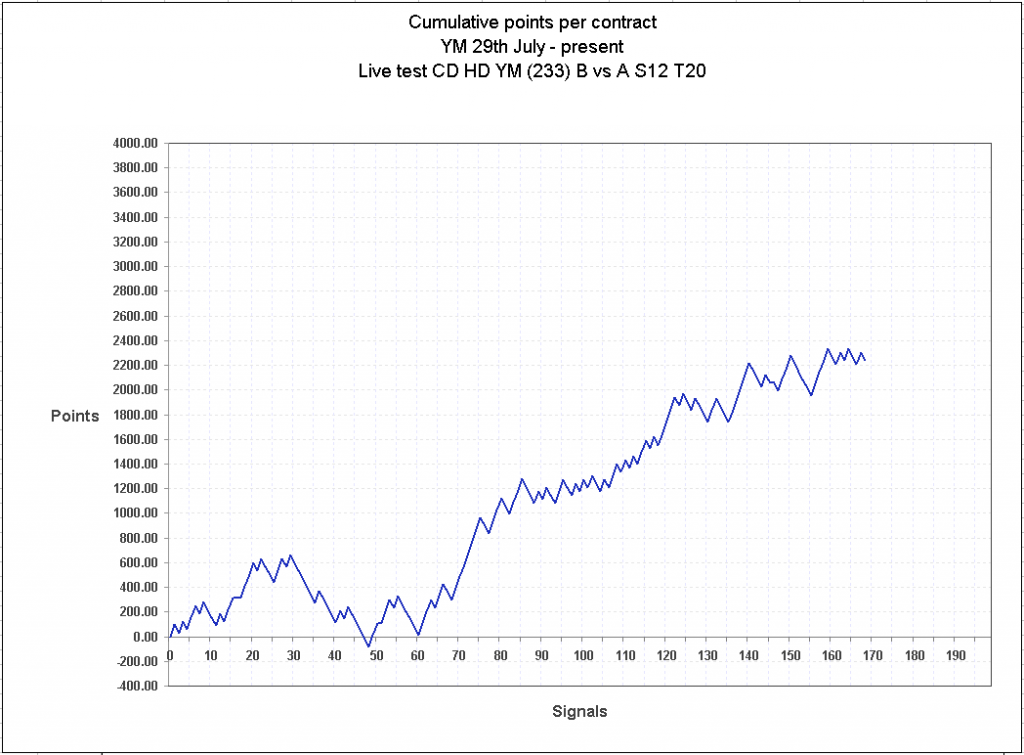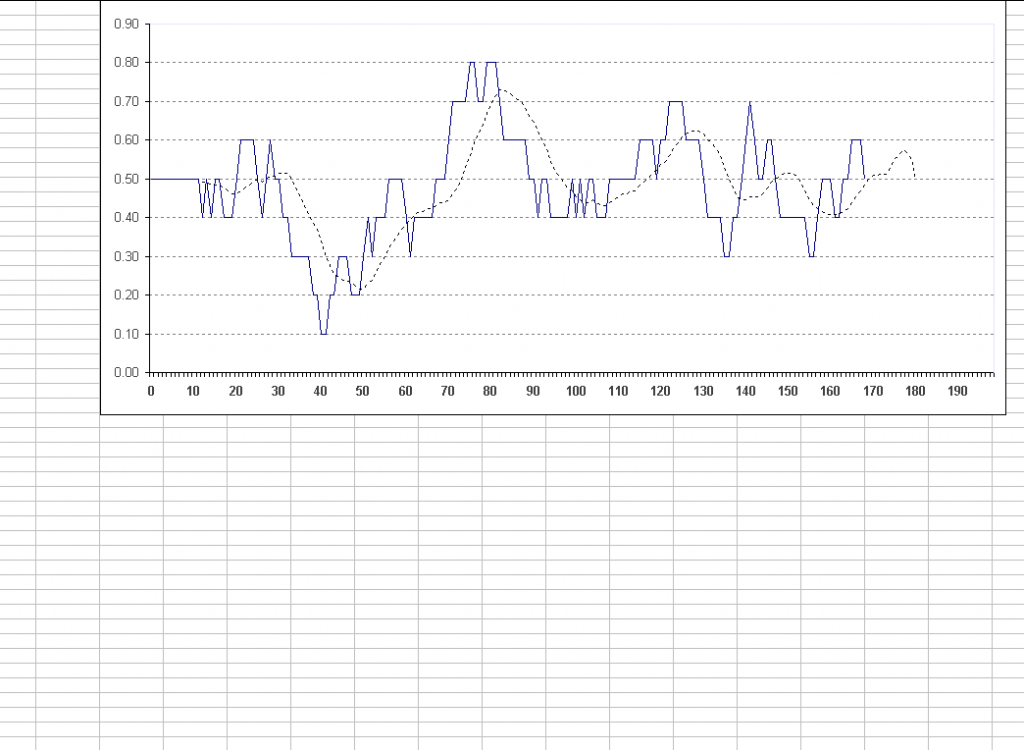22nd May 2103 NASDAQ 100 futures; (intermediate top)
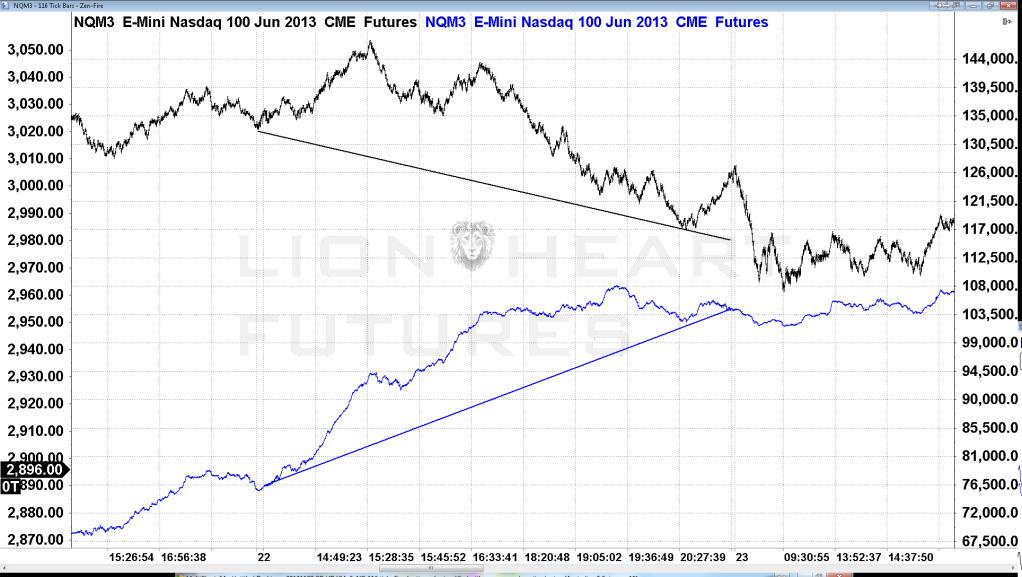
3rd May - 12th June 2013 (
Intraday volume);
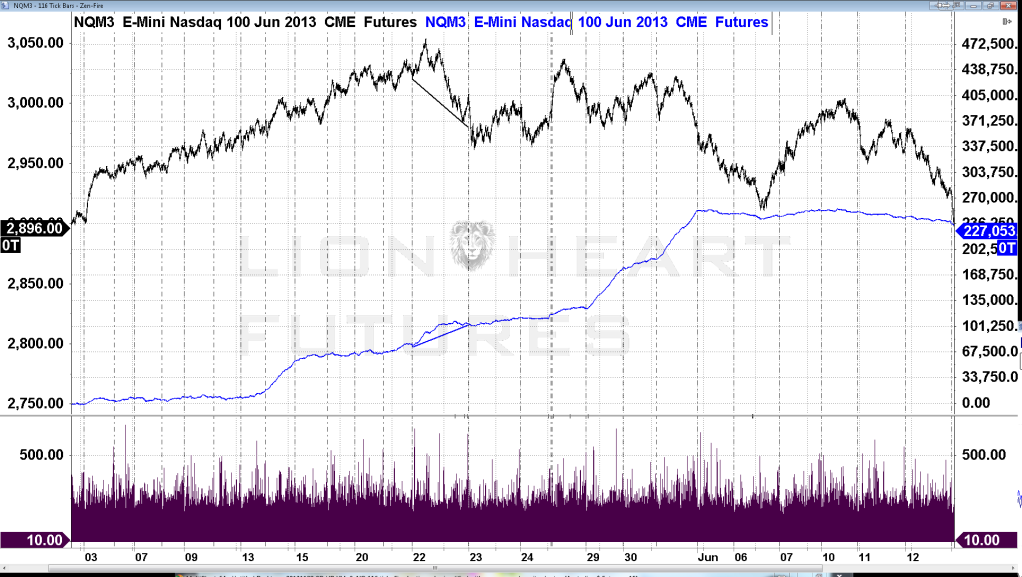
10th May 2013 - 8200>7500
13th May 2013 - 7500>18000
14th May 2013 - 18000>55000
15th May 2013 - 55000>65500
17th May 2013 - 65000>65000
20th May 2013 - 65000>67000
21st May 2013 - 67000>75000
22nd May 2013 - 75000>104000 ~ 29
23rd May 2013 - 104000>112000 ~ 8
24th May 2013 - 112000>115500 ~ 3.5
28th May 2013 - 115500>124000 ~8.5
29th May 2013 - 124000>180000 ~ 56
30th May 2013 - 180000>190000 ~10
31st May 2013 - 190000>253000 ~ 63
5th June 2013 - 253000>249000 ~ 4
6th June 2013 - 249000>246000 ~ 3
7th June 2013 - 246000>254000 ~ 8
10th June 2013 - 254000>251000 ~ 3
11th June 2013 - 251000>244000 ~ 7
12th June 2013 - 244000>235000 ~ 9
